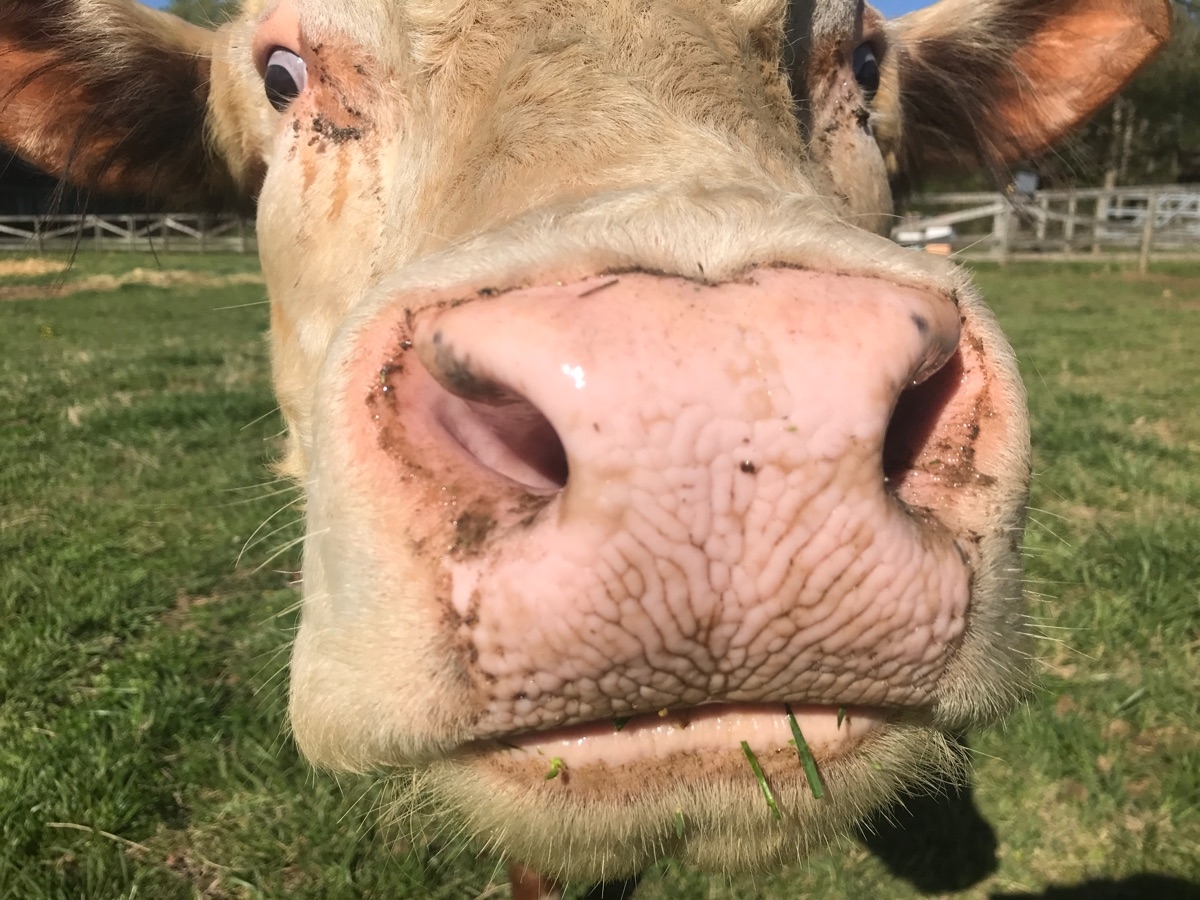Our awesome beekeeper, Jennifer from Buck Naked Farm, contacted me while I was out of town and asked if she could put up a swarm box at our place. Since we’ve had plenty of experience with swarms here at the farm, I thought it was a great idea. Rather than trying to explain what a swarm box is, I’ll let the expert do it better than I ever could. See the link below to read about how Jennifer catches swarms of bees.
Wash, rinse, repeat
Two Sunday’s ago, I walked out of the barn and saw a swarm of bees. Jennifer, our beekeeper was over here in minutes and other than a bit of adventure with someone afraid of heights going up in the bucket of a tractor, it was a non-event. Kinda neat but nothing dramatic.
The following week, Spork and I drove to Florida to attend Sun N Fun. A first for both of us.
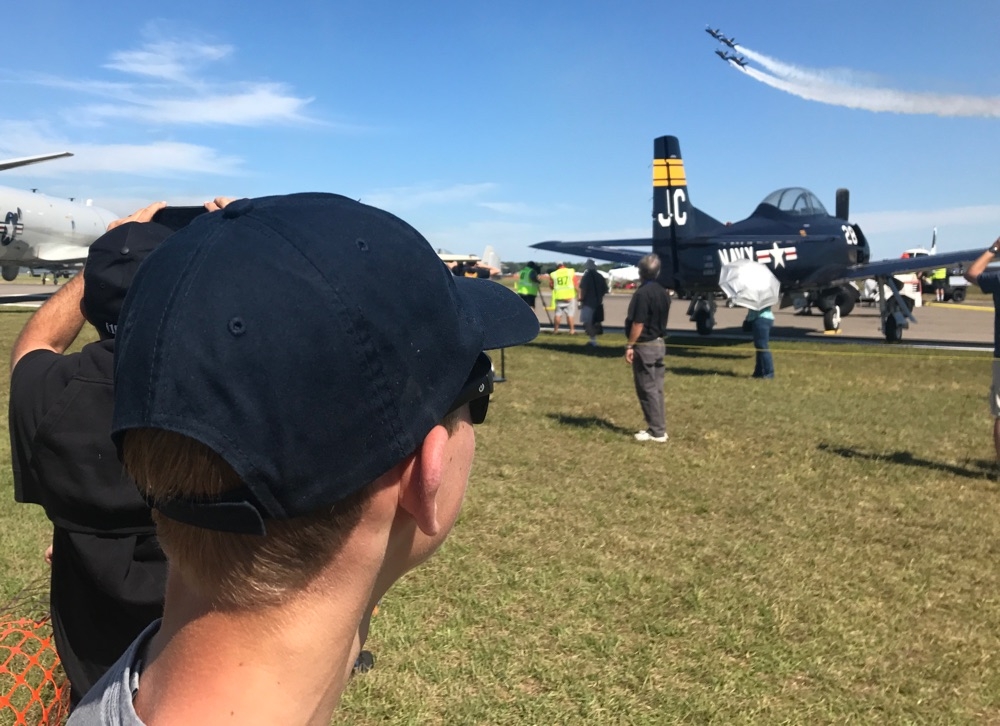
We had a rather large time. Partly because it was a chance to see airplanes like the above. Partly because we could talk to airline recruiters, aviation college recruiters, and even military recruiters.
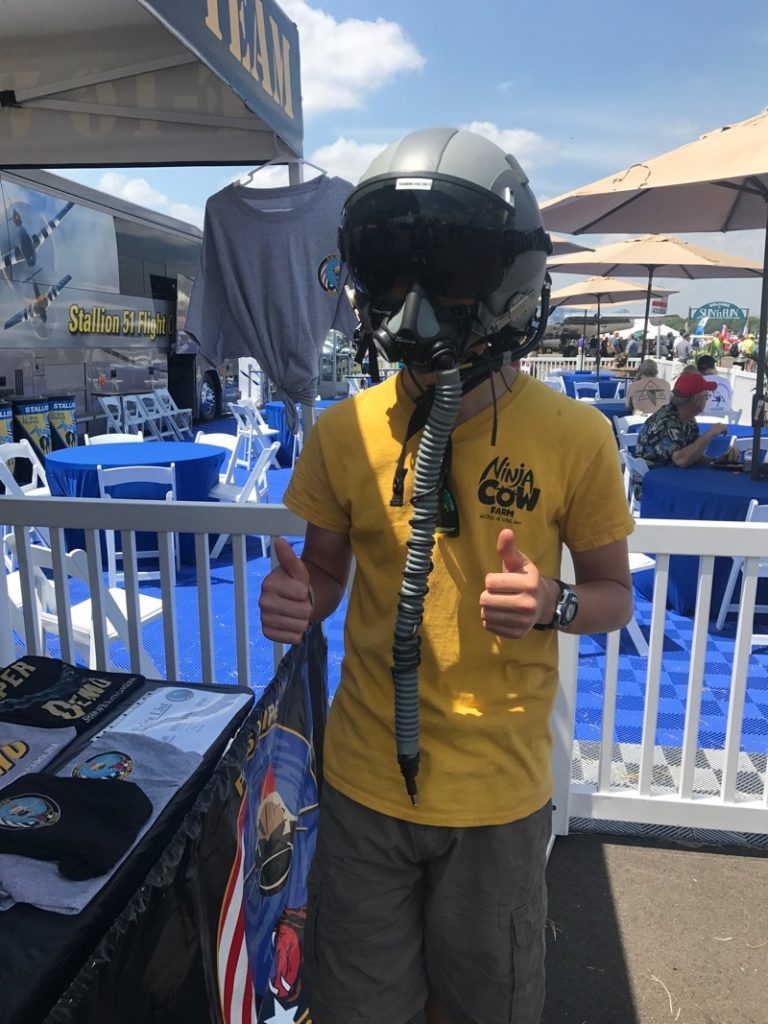
Spork says he wants to fly for a living. Or maybe do aerospace engineering.
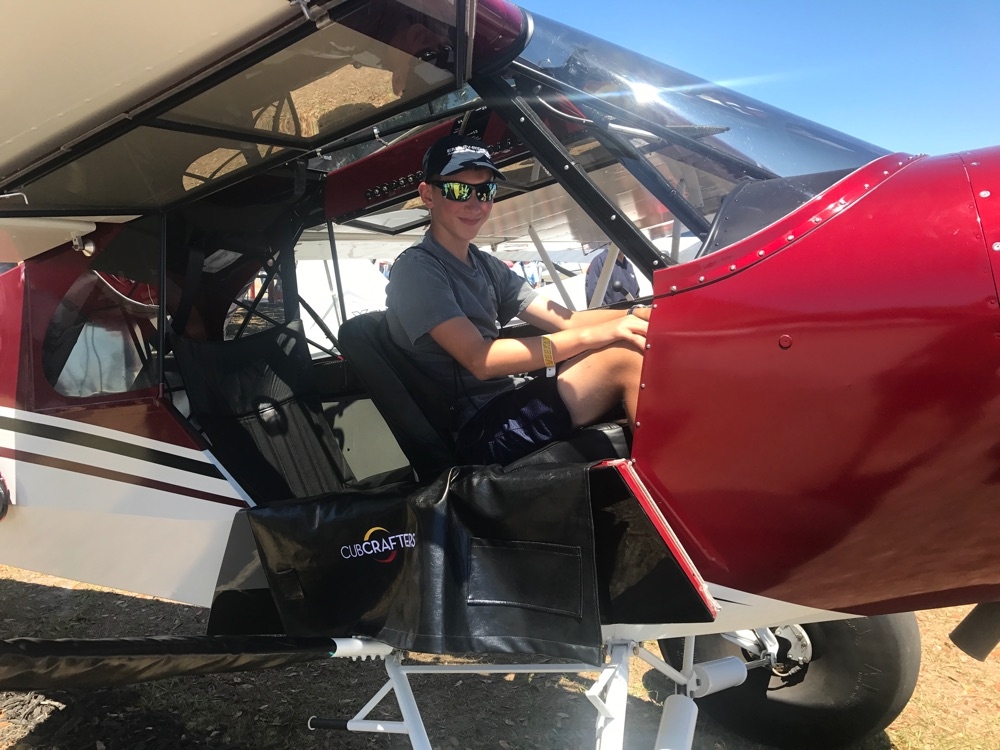
Whatever it is, as long as it involves airplanes and pays well enough to make a living.
But the joy of this trip wasn’t that it was airplanes, it’s that it was a boys trip.
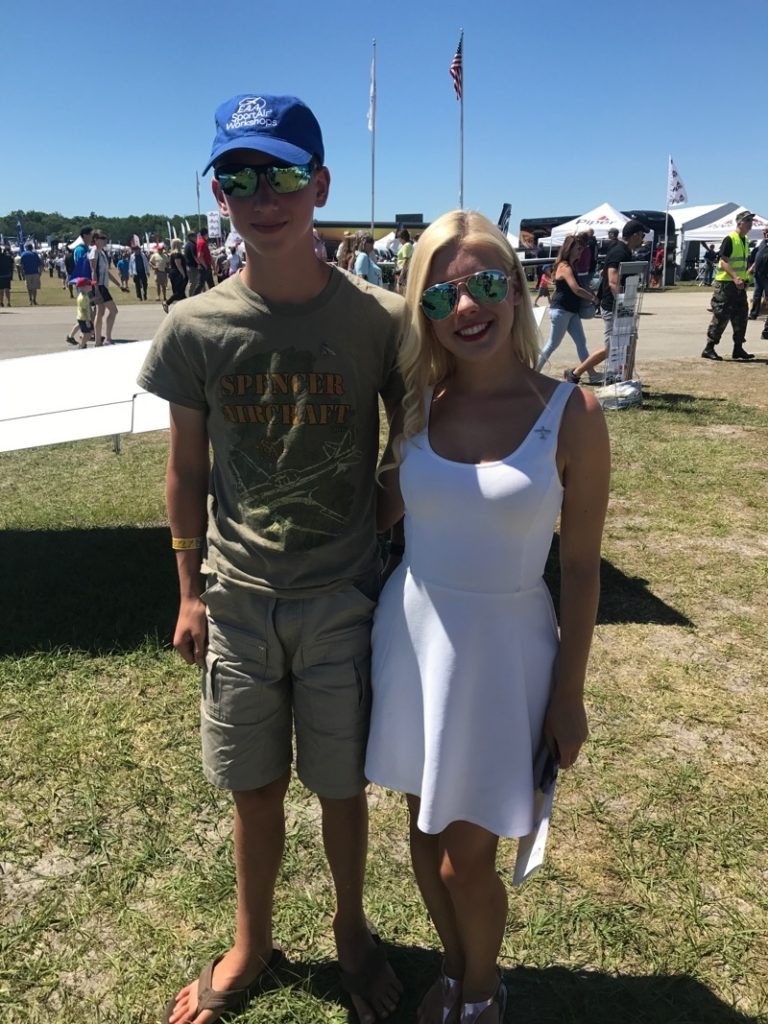
He and I hopped in the car and drove to Lakeland, FL. It took 12 hours down, and 9 hours back. We shared a room together while we were there. We ate together. We went to the show together. It was a lot of time to spend together and a lot of time with no women. When you are the only other boy in the house, that’s a big deal.
So what does this have to do with bees?
Note the 3 hour difference between our Southbound trip and our return trip. We pushed straight through to get home, barely stopping. Upon arrival I pulled up to the barn to grab the mail my neighbor had put in my office for me (Thanks Dustin!). Mail in hand I headed straight back out to the car to go to the house and actually arrive home. As I looked out, I saw a swarm just getting going in the bee yard.
Sigh. Really, this is happening now?
I told Spork to watch the swarm (we’d just done this the previous Sunday, he’s an expert now) and texted Jennifer, our beekeeper. Then I went to get the bucket truck and my bee gear. The swarm, having no originality, proceeded to work its way over to the same exact tree as the last swarm and landed on nearly the same branch. It really was wash, rinse, repeat.
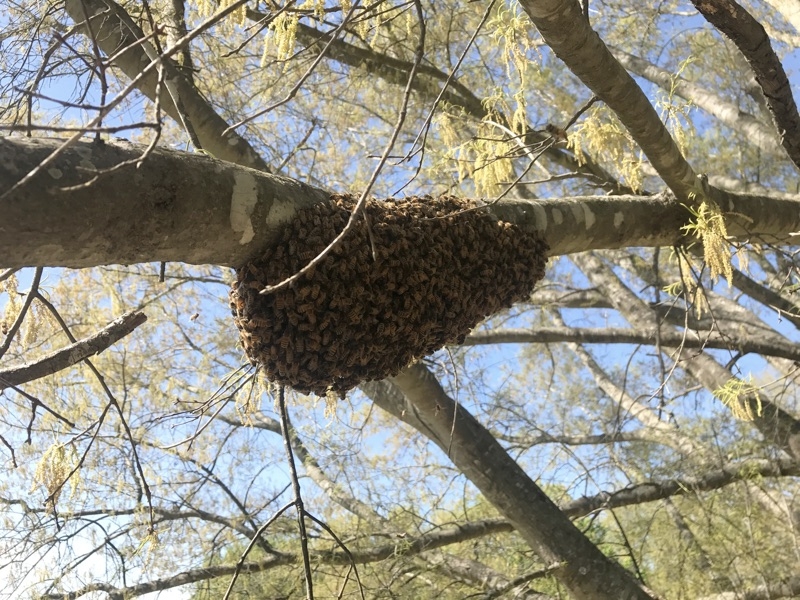
Ever wondered what a swarm actually looks like up close? Your intrepid farmer found out for you.

Once Jennifer arrived, we suited up and went about capturing the swarm. With the bucket truck and the bees perfect location, it was easy.
It seems scary to be in the air, and dumping 3 pounds of live bees in your lap but it’s actually not too bad. (Says the guy who was standing on the ground filming)
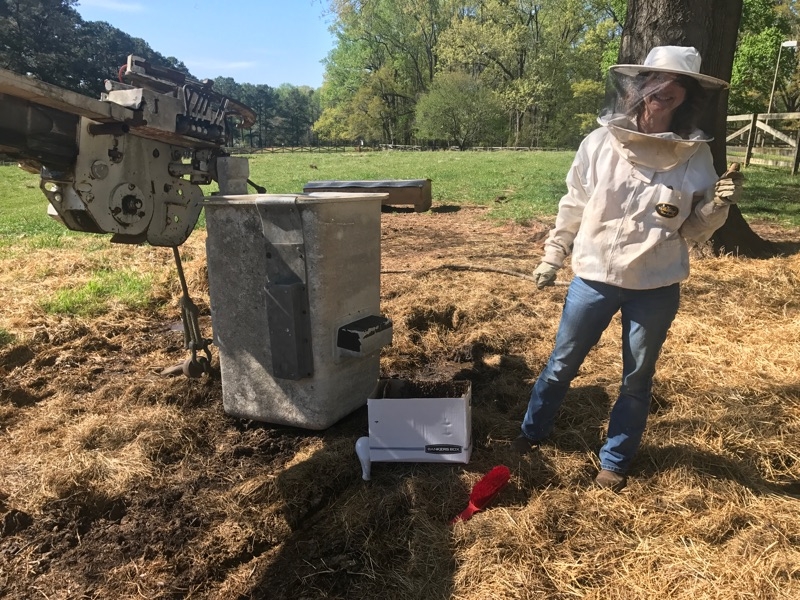
It’s funny to me that there is so much specialized gear for beekeeping, but when it comes to capturing a swarm, we use an old bankers box I had hanging around.
Once the bees were on the ground and in the box, it was time to transfer them to their new temporary home.
Now that we had them safely in their new home we could call this a day. Congratulations were passed around, equipment put away and we all returned to our regularly scheduled Sunday which for Spork and me it meant finally arriving home to see the girls and to start cleaning out the car.
It was a long day but it was great. A safe trip home from a fun trip with the boy, and a new hive of bees to add to our apiary. Once again thanks to Jennifer from Buck Naked Farm for being so responsive and fun to work with.
Capturing a swarm, the ninja way
Last Saturday we were enjoying the beautiful weather and all the goodness that is a busy Saturday. As I was walking over for a late lunch I looked into the pasture and stopped in my tracks. I saw bees flying. A bunch of bees. I’d seen this once before and not known it was a swarm. This time I was older and smarter. I stopped and checked to see where the swarm was heading while simultaneously texting Jennifer with Buck Naked Farm “Swarm at my place!” I grabbed Spork and pulled him into this, while I hoped that the bees would go to the tree they seemed to be meandering towards. About 10 minutes later, the bees had settled onto a high branch in the tree and Jennifer had texted she’d be here in 15 minutes. Since she lives 15 minutes away, that’s a pretty stunning response. That was 15 minutes from when I texted her originally. A swarm is a big deal!
I tried to use our bucket truck but we’d broken something inadvertently while fixing it that week which I didn’t realize till I tried to raise the boom. Oh well, plan B. 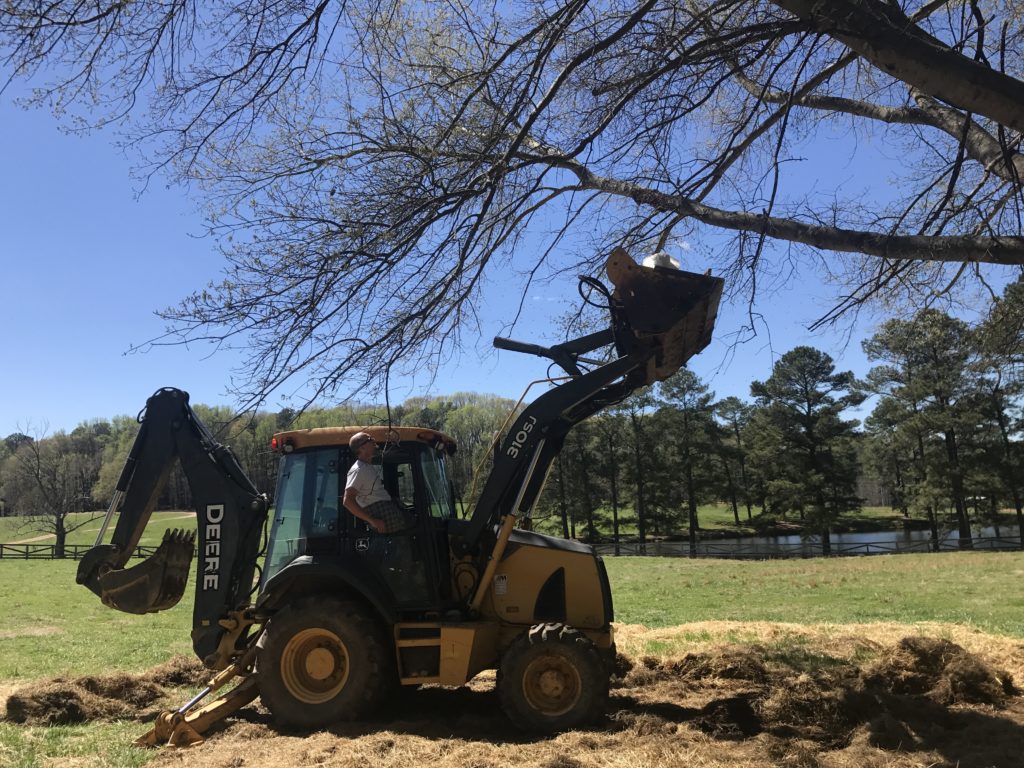
I went and grabbed the backhoe and pulled it into place while Jennifer was gearing up in all her bee paraphernalia. We had a funny moment as we were both quickly and professionally setting up when Jennifer looked at the backhoe, then looked at me and said, “Who’s going up in the bucket?” Since she was wearing all the bee gear, and I was garbed in a t-shirt, shorts, and flip-flops I kinda assumed she was going up. However my response was, “Can you run the tractor?” “Um, no.” “Then I guess it’s you going up.”
This is important, because Jennifer is afraid of heights. Like, a lot. However that swarm wasn’t going to get itself so she steeled her courage and hopped into the bucket. You’ll note in the picture that I’ve put down the rear stabilizers so that there was no wobble in the tractor as she moved around. That and moving very slowly was the best I could do.
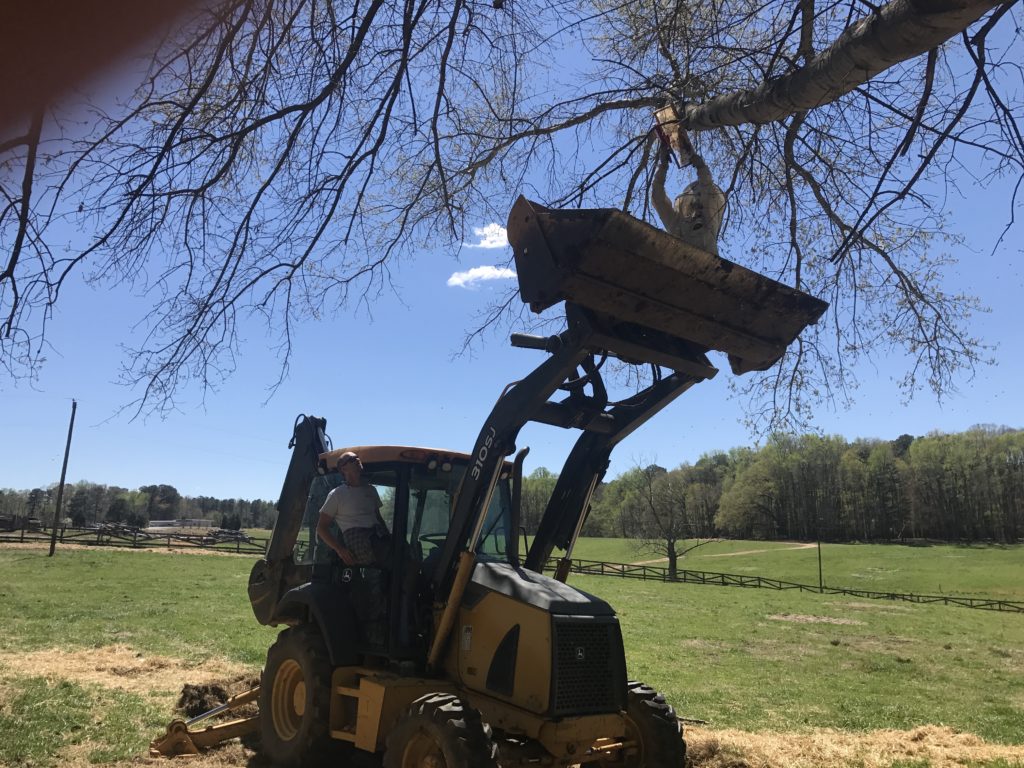
When you capture a swarm, the way it works is the bees all cluster around the queen and hang out while the scout bees go look for a new home. The swarm is very docile during this period so it’s just a matter of getting under the swarm with a box, and then brushing the bees into the box. No bid deal as long as you don’t mind 20,000 bees falling into your lap.
Then you check to see if the queen made it into the box. If so, you simply wait because the rest of the bees will eventually work their way into the box to be with the queen. Simple.
After brushing the first batch into the box, Jennifer checks for the queen. luckily we got her the first time so this one was easy.
Btw, as an aside, as Jennifer is up there in all her gear. I’m standing on the hood getting this video, in the previously mentioned flip-flop attire. Yes I did get stung. Yes, I need sympathy. The things I do for you folks.
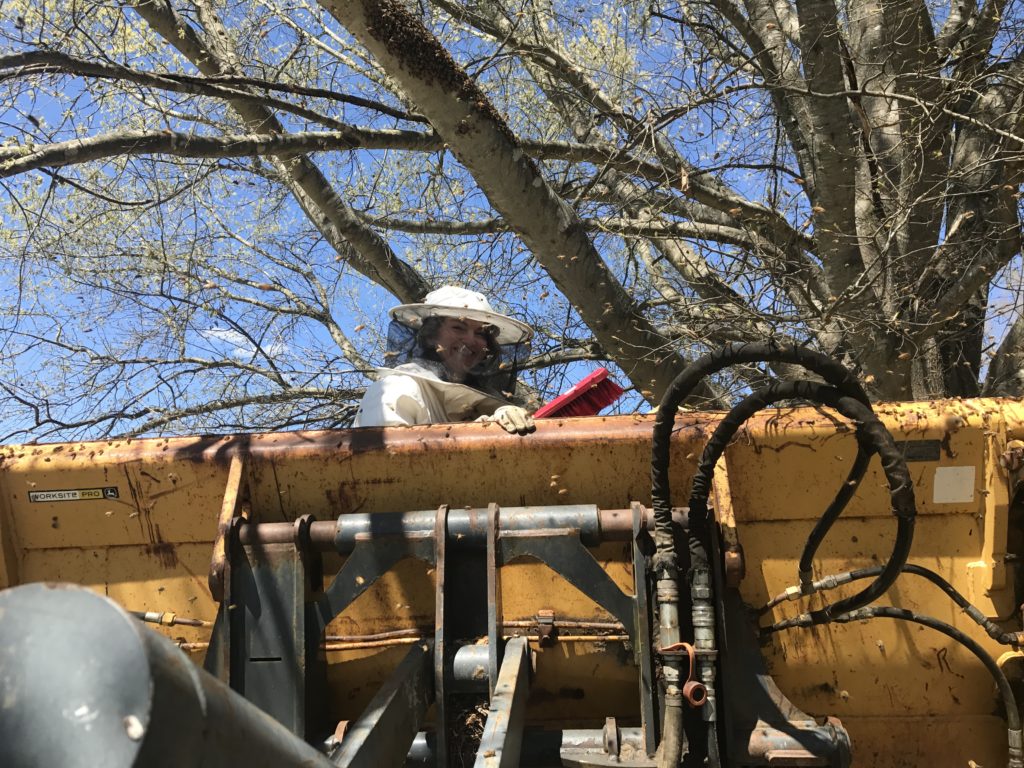
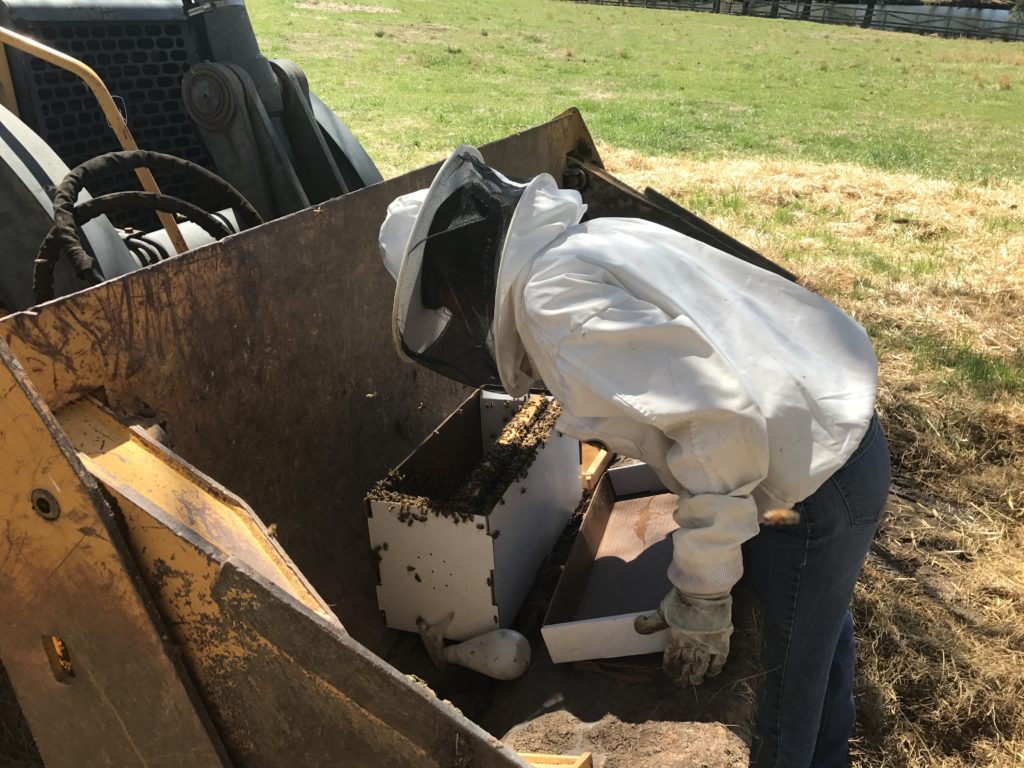
Jennifer was very happy to be back on the ground with a captured swarm. I’m not sure if the ground was the highlight, or the capture. Either way, she was pretty happy.
Swarms are not good for a beekeeper. It means that the remaining hive will not have any real production that year. However swarms are a result of having a really good beekeeper. They are a sign that the hive is doing well. In fact the bees are doing so well that they decide that they should split in half and make two hives. That is what a swarm is, it’s reproduction, almost like a cell dividing. It’s natural and a good thing.
By capturing the swarm and giving them a new, safe, warm home, we haven’t lost production, we’ve gained another hive. Neither hive will have much production individually but having both is a net gain. Couple that with the package bees Jennifer had already ordered, and we have a very active bee yard this year, which is great because we are powering through the honey in the store. I had to do an emergency order with Jennifer because we were out of our big honey and almost out of our mediums. I didn’t realize we sold so much.
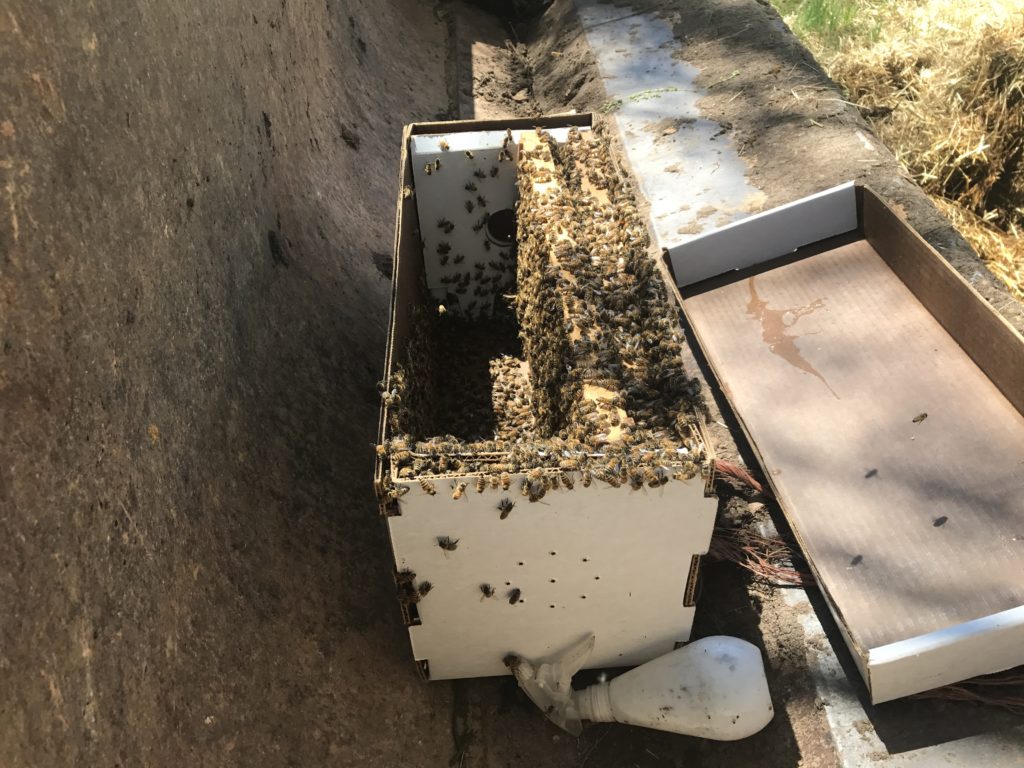
It was a pretty cool afternoon. The only downside was the bucket truck not working, but Miguel fixed that the next week so all is good on the farm.
Watermelon honey?
People are often surprised to learn that bees don’t have a ready source of food during the summer. The nectar flow around here is only about a month and a half in the spring. After that the dog days of summer take hold and there isn’t much for the bees to work with. Of course we do what we can for them but that is only so much.
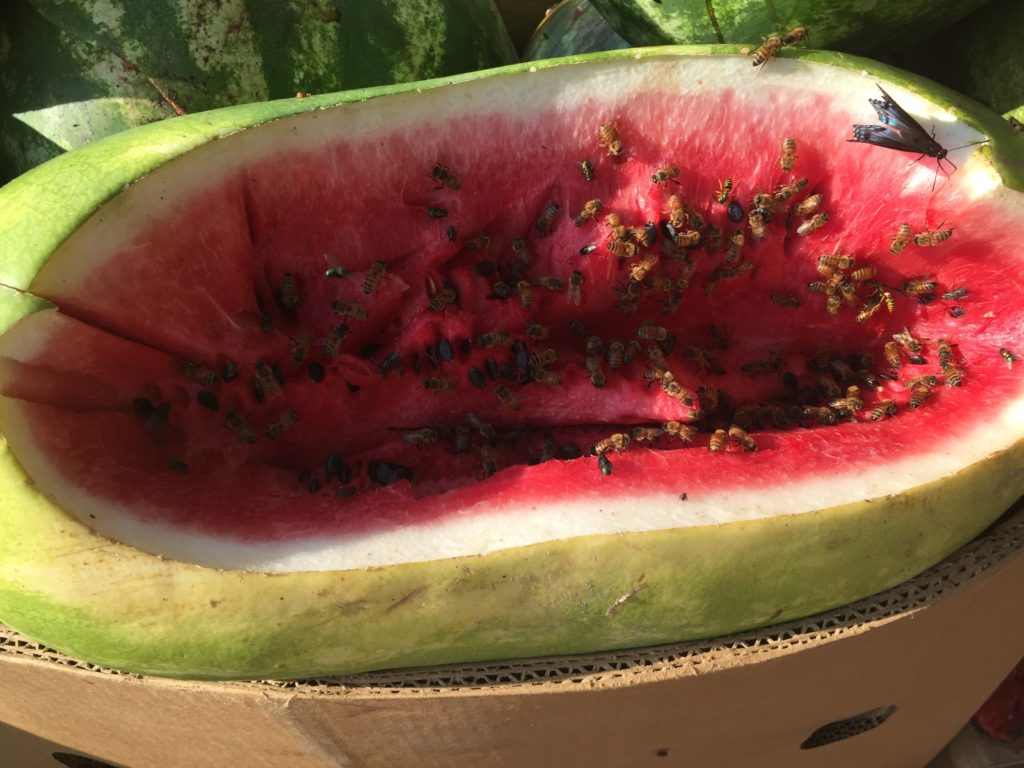
However when July gets here, the bees at our farm get an unusual treat. In July, we start getting watermelons from the market. Often the reason we get the watermelons is because they are cracked or broken. And with Spork and I around, there isn’t much chance that a whole watermelon will stay unsampled for long which means you very quickly end up with the picture above. Bees absolutely swarming over the watermelons getting all the juicy goodness that they can. With our barnyard work area within site of the bee hives, it doesn’t take the bees anytime at all to find out we received watermelons and we have buzzing bees everywhere.
For those of us working the produce, this is definitely a hazard because you have to pick up these watermelons which are covered with bees all day. That means sometimes you grab a bee instead of the expected melon and they will zap you immediately. The other day, everyone working received at least one sting and Adam got stung on his last day with us.
However it does mean that our bees get an unusual nectar flow in a time when all the other bees in Wake County are going hungry. I haven’t talked to our bee keeper yet to see if she can compare our hives vs. the regular hives, but I’m sure she’ll let me know if she sees anything unique in the results.
I wonder if watermelon honey is a thing? 🙂
The bees have survived their move and are doing relatively well
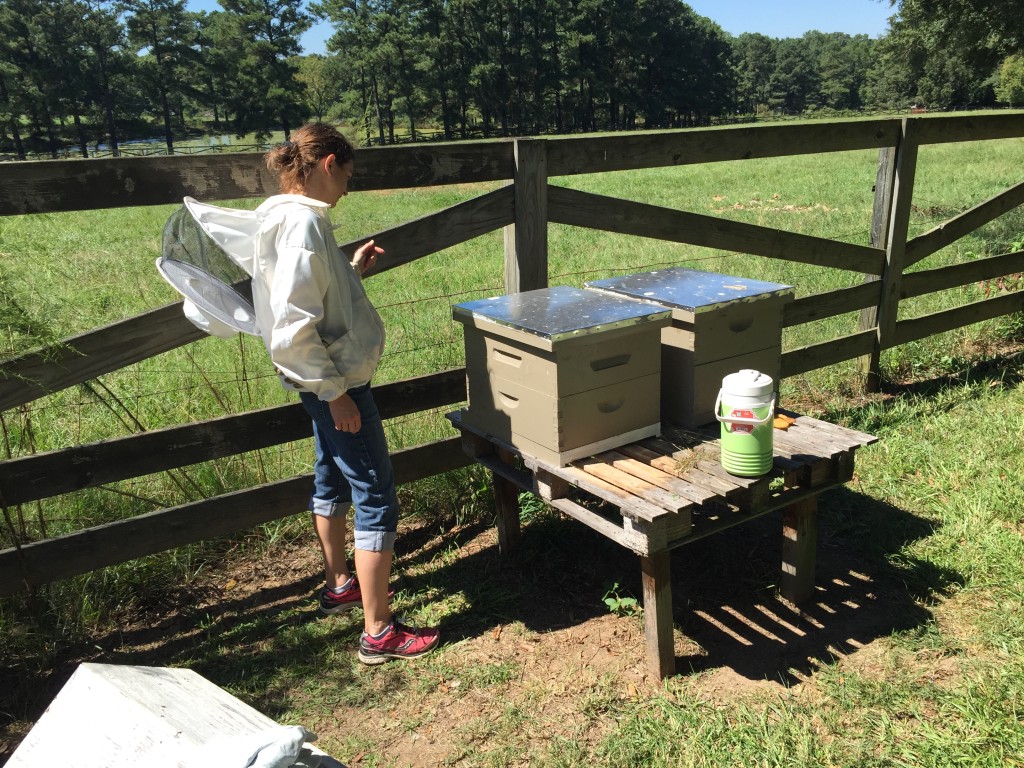
Last week Jennifer from Buck Naked Farm came out and checked on all the hives. The two that were rehived, shown here above, were doing well. They had emptied the feeders, reattached the comb we placed into the frames, were laying eggs, and bringing in pollen. We had to greatly reduce the hive entrances because the neighboring hive was robbing these guys something terrible but with the hive entrances reduced to the smallest size they could finally defend their hive and start making progress. Jennifer thinks we may have to combine these two hives into one depending on how they do the next month or two. If so we’ll keep the queen in the hive that is farthest to the right because we know she is a new queen. The hive to the left is a native swarm and Jennifer wants to requeen that hive in the spring should we not combine them this fall. The thought is to have a young queen whenever possible.
The remaining top bar hive looked ok as well but not as good as I’d have thought for how good the hive looked all summer. There was lots of honey and brood but they hive certainly wasn’t bursting at the seams. There were about 6-8 bars with nothing on them so there was plenty of room for the bees to continue growing.
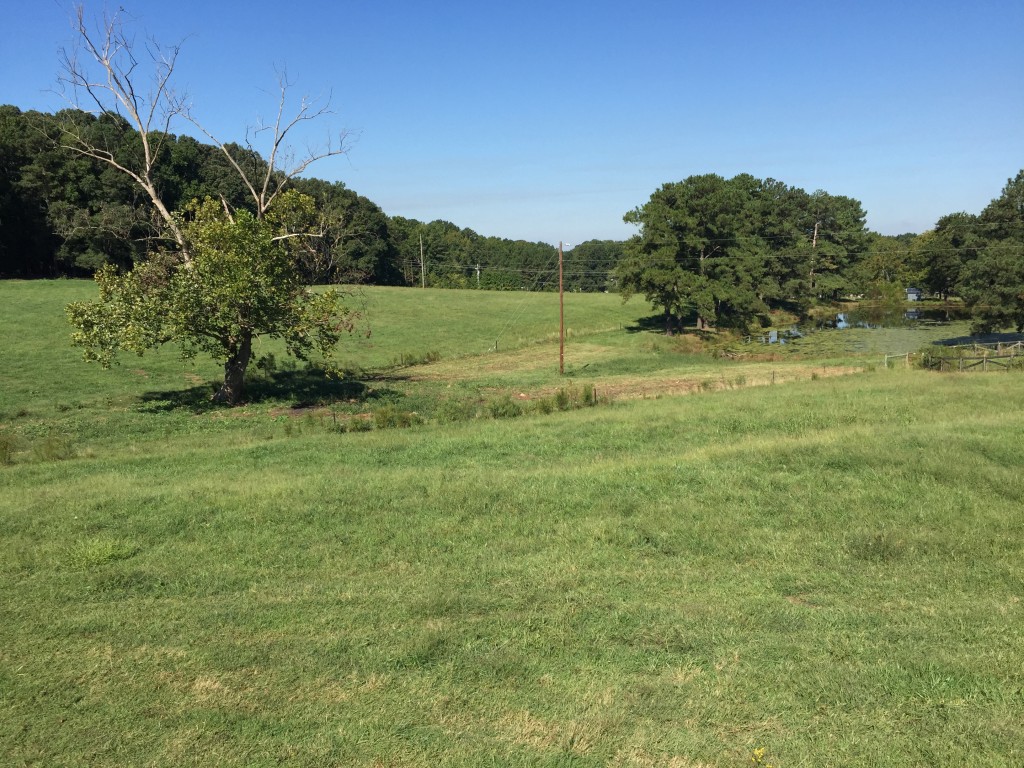
One thing we’ve done to help the bees along is to plant pollinator areas with the help of the US Bee Buffer program. We received about 3 pounds of seed with a variety mix I’m looking forward to seeing come up. Pictured above you can see the two strips cut low on each side of the telephone pole. We planted both of those areas, plus another couple of acres in our back pasture. These were planted mid-September. The areas shown above is about 100 yards from our hives so if everything comes up, the bees should have a short flight to a big buffet.
Hopefully our pollinator planting will give the bees a boost heading into fall and help them get through the winter. I’m looking forward to next spring when we can get these hives in production and add some new hives.
The bees get new homes
Yesterday Jennifer from Buck Naked Farm came by and she and I moved bees from my top bar hives into her traditional Langstroth style hives. The weather, which had looked questionable turned out to be just perfect and the bees behaved surprisingly well considering we tore apart and restored their entire homes. The whole process felt like moving into the dorms the first year of college. Lots of organized chaos.
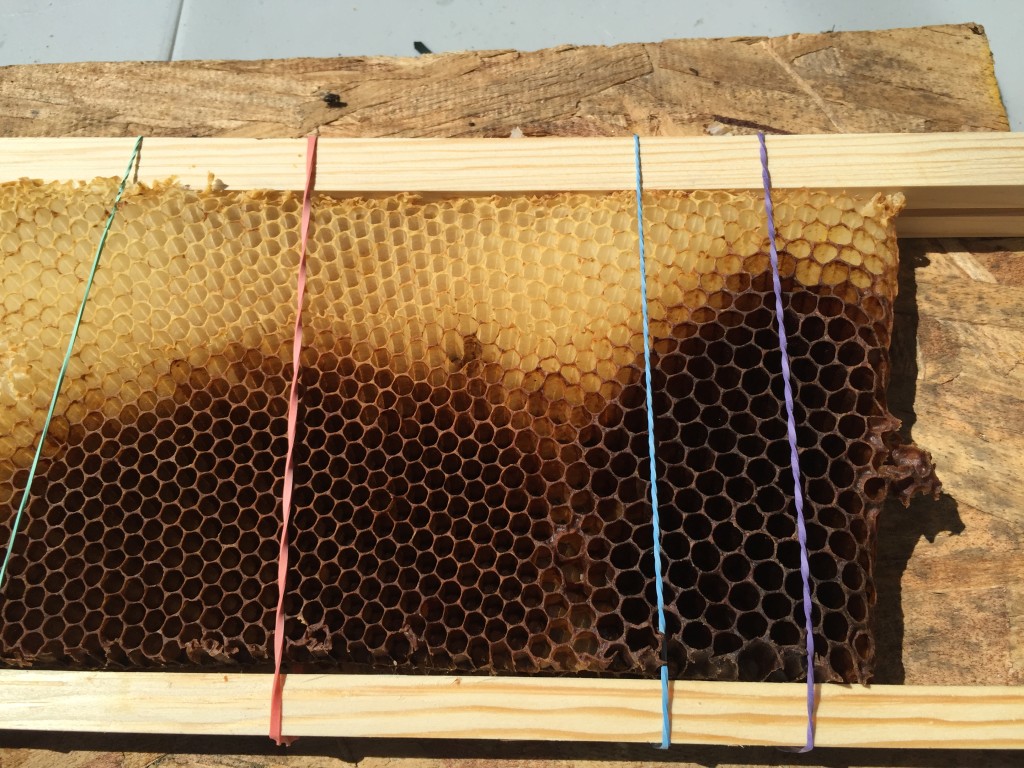
We had to take the fully built out comb from the top bar hives and cut it to fit into the traditional frames. In this picture you can se the drone comb on the right where the comb is built bigger than the rest. This is something you don’t see in a Langstroth hive because the wax is already drawn and the bees use the size that is provided. This is part of what is attractive about a top bar hive, it lets the bees do what comes natural to them. The down side of the top bar hives is we had to combine two hives that were not going to make it, and rehive another hive that probably wouldn’t have made it through the winter either. Three out of four hives didn’t have a chance. The hives they are in now will allow for much more management and a better success rate for the bees. Maybe they won’t be fulfilled emotionally, but they will be alive, so that’s something.
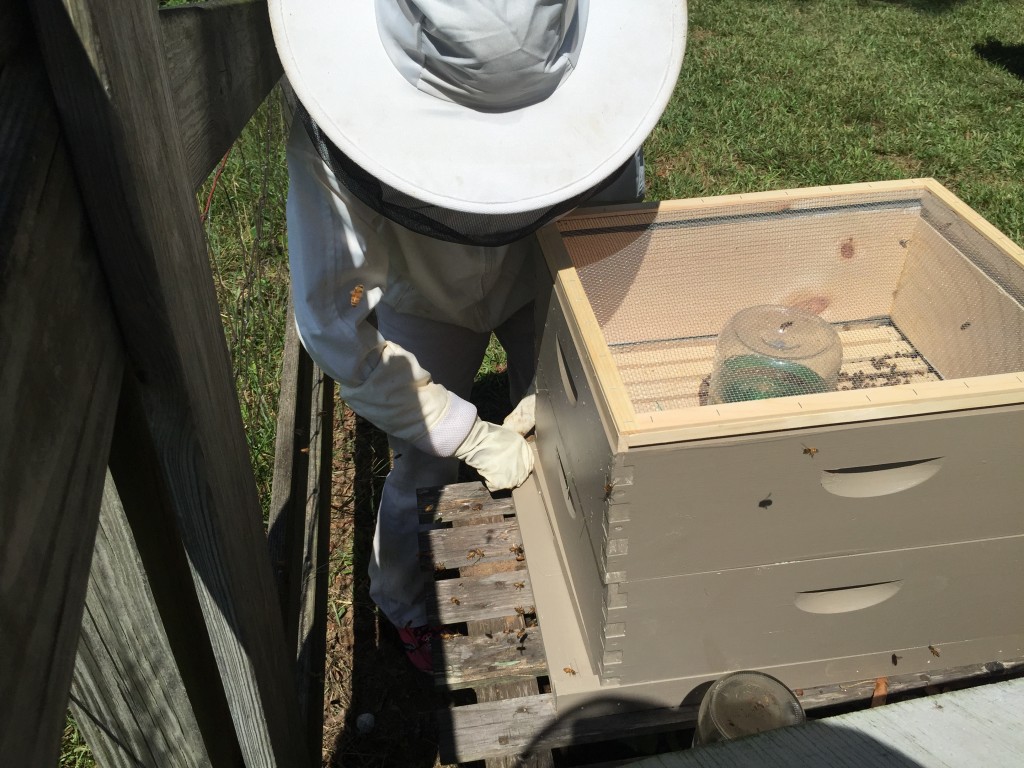
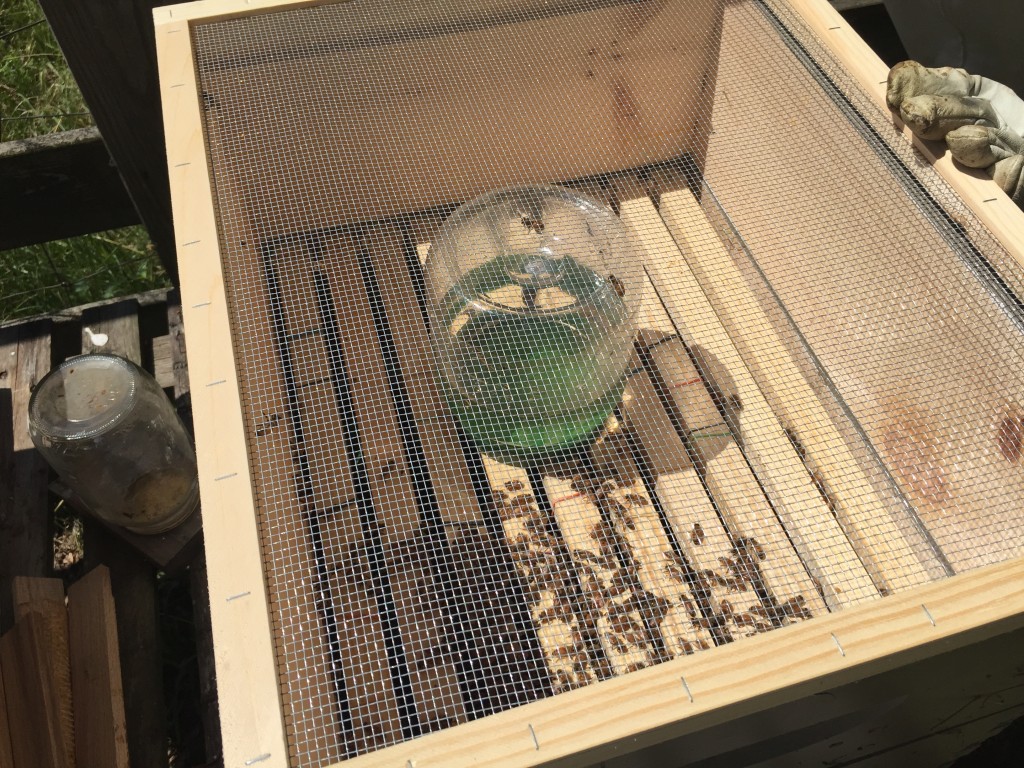
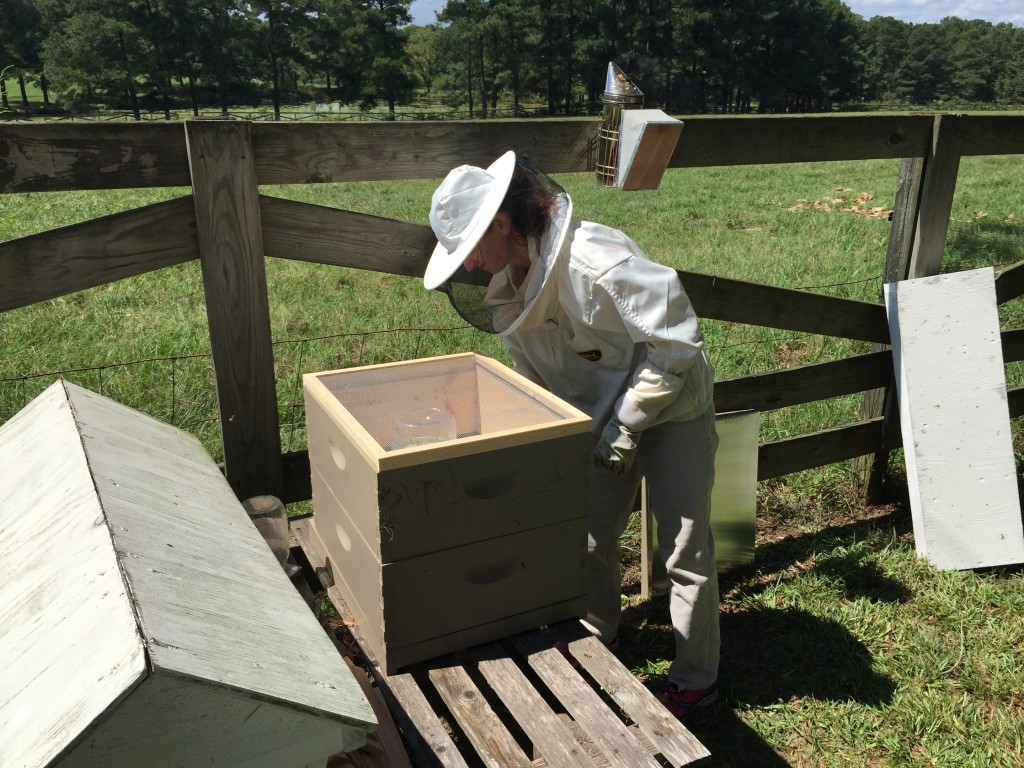
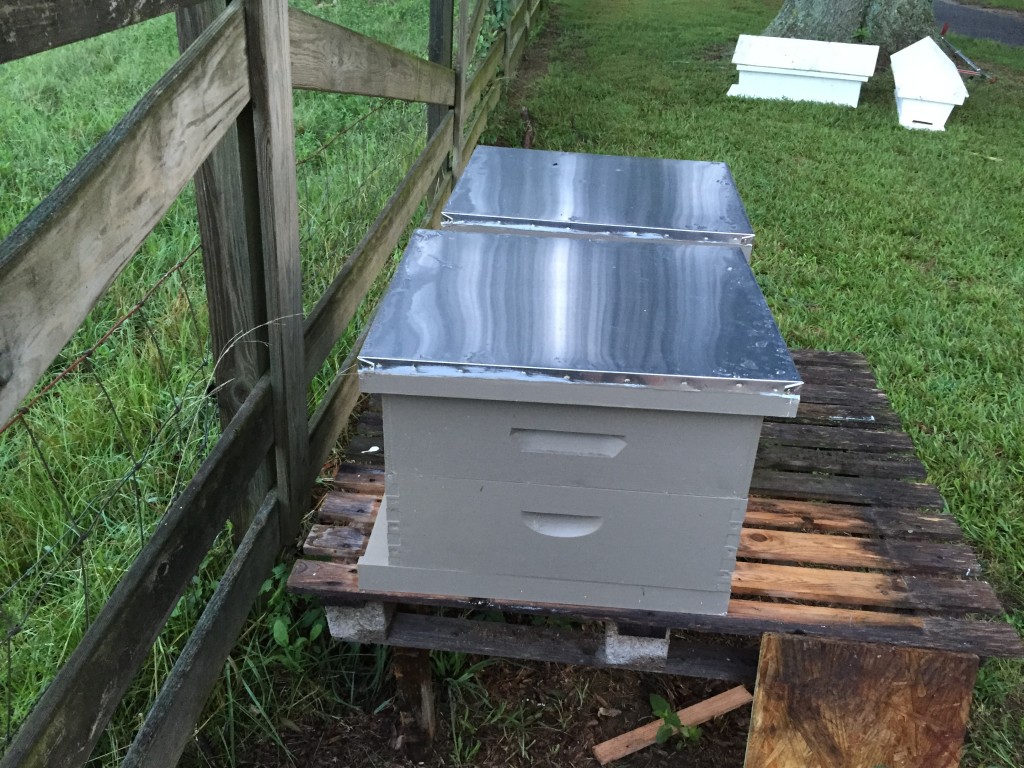
Here you can see the Langstroth hives in the foreground, and the old top bar hives right in the background.
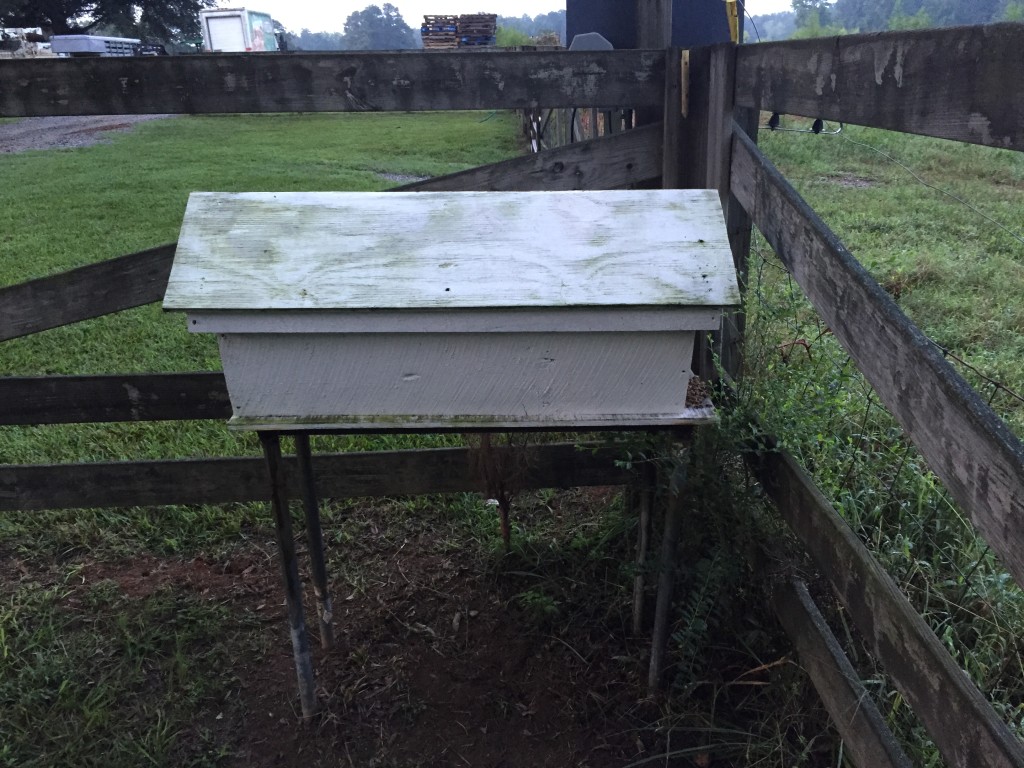
We chose to leave the strongest hive in place as they seem to be doing very well. Everyone else was moved to new digs and given sugar water. Next week when we check on the rest of the bees and refill the feeders, we’ll also break open this hive and take a look inside to make sure of how they are doing.
We have local honey and real soap in stock!
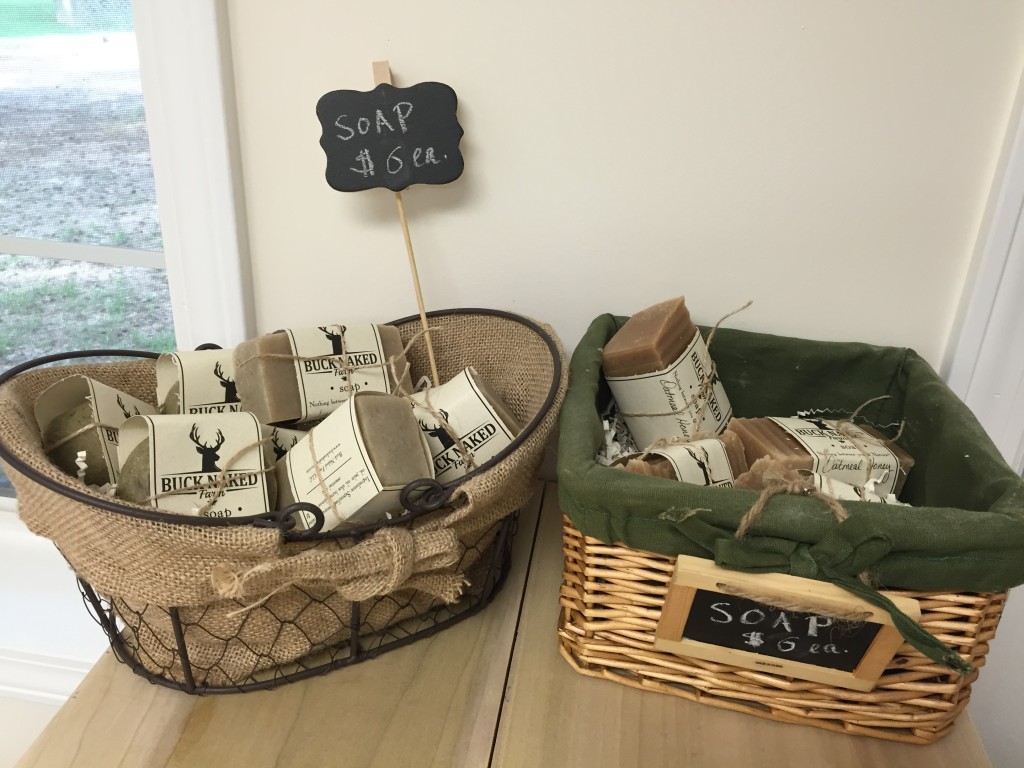
We have soap and honey IN STOCK. I’ve been talking about it forever but we finally have it here.
The sales room now smells awesome with the soap sitting here. I’m definitely keeping this stuff around from now on. This soap is from the lady, Jennifer, who will be doing our beekeeping going forward. She will be transferring our bees over to her hives this week and bringing more bees to our farm so that we can finally have all the honey we can use (I hope!)
In addition to beekeeping, she’s been buying my lard over the years and making soap with it. Since her soap looks SO much better than mine, as in it’s actually packaged, had a label, etc, I asked her if she would let me sell some of her soap in our store and she agreed. What you see here is soap made from the lard of our pigs, along with all the other oils and fragrances that make great soap. I know they are different recipes so I don’t know what ratio which one has but these are the real deal. If you want to read more about what they do and how they do it, check out their new farm website, Buck Naked Farm.
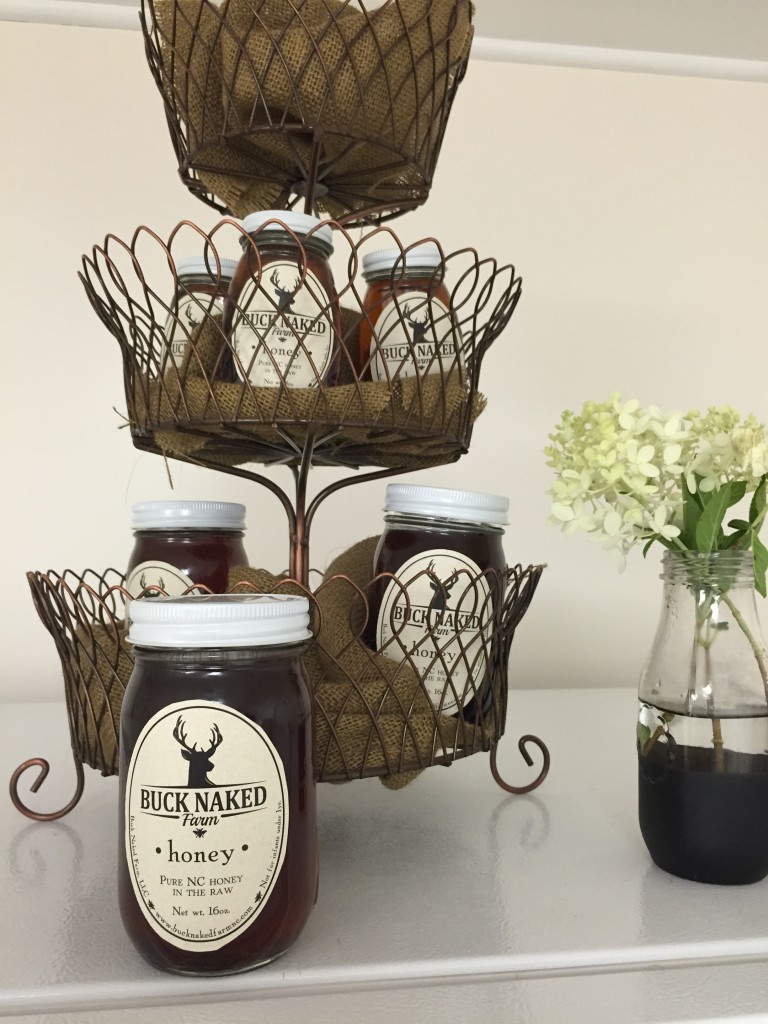
In addition to the soaps, we also have an initial order of honey on hand. This honey isn’t from our bees yet, it’s from Jennifer’s bees who live in the mountains of NC. I of course scammed a bottle for myself to taste and it is better than the honey I extracted myself. I’m sure our honey will improve with Jennifer’s ministrations but for now we are blessed to have this honey on hand. Hopefully we’ll get a bit of honey from our farm when we move the bees. Next year we should definitely have honey and honey going forward as well.
You’ll also note that besides having labels, everything is very well presented. When you see what I’ve displayed, it is all white, cold, and without style. Jennifer walked in with not only product, but displays, signs, baskets, flowers, and all the things that make it obvious a woman has been here. I know I’ve been meaning to get some color in our room, but I didn’t know how badly it needed it till I saw her displays. I’ve gone to work on it though, we’ll have some stuff on the walls shortly.
Exciting new products coming to our farm
A while back, we added something new to our farm store. We brought in chicken from another farmer and offered it for sale. This allowed our customers to buy beef, pork, and chicken all in one stop and kept them from having to drive to a different farm, or Whole Foods, or wherever. The response has been overwhelmingly positive from our customers and they appreciate that we offer a one stop protein stop.
Since chicken has gone over so well, I’ve looked at some other items that might work for our customers. We get inquiries all the time for when we will be producing honey from our bees. Unfortunately I’ve not been able to get enough production to supply anyone besides our own family. With the continued lack of production, I began looking for someone to come in and manage the bees for me and expand the operation. Yesterday I got a handshake deal with one of my great friend’s wife who has become quite the beekeeper (way better than me). She is going to be taking over my hives, and bringing new hives to the farm and maintaining them for me. I’ll then buy the honey from her and have it for sale in our store. This all sounds very future tense, but she already has gallons of honey available from her own hives which are just down the road. She will be bottling honey soon and bringing it over labeled and ready to sell. So we WILL HAVE HONEY in a few weeks. For all of you who have been waiting for years, it’s almost here!
In addition to honey, she also buys our lard and has been making soap. The soaps are much prettier than mine ever were and they do a great job.

So in addition to having honey in stock, we’ll also have real soap for sale (you do know the difference between real soap and fake soap, right?) around the same time so look for new products next time you come by for your meat fix.
Now I have to go build shelves.
The last of the summer grass
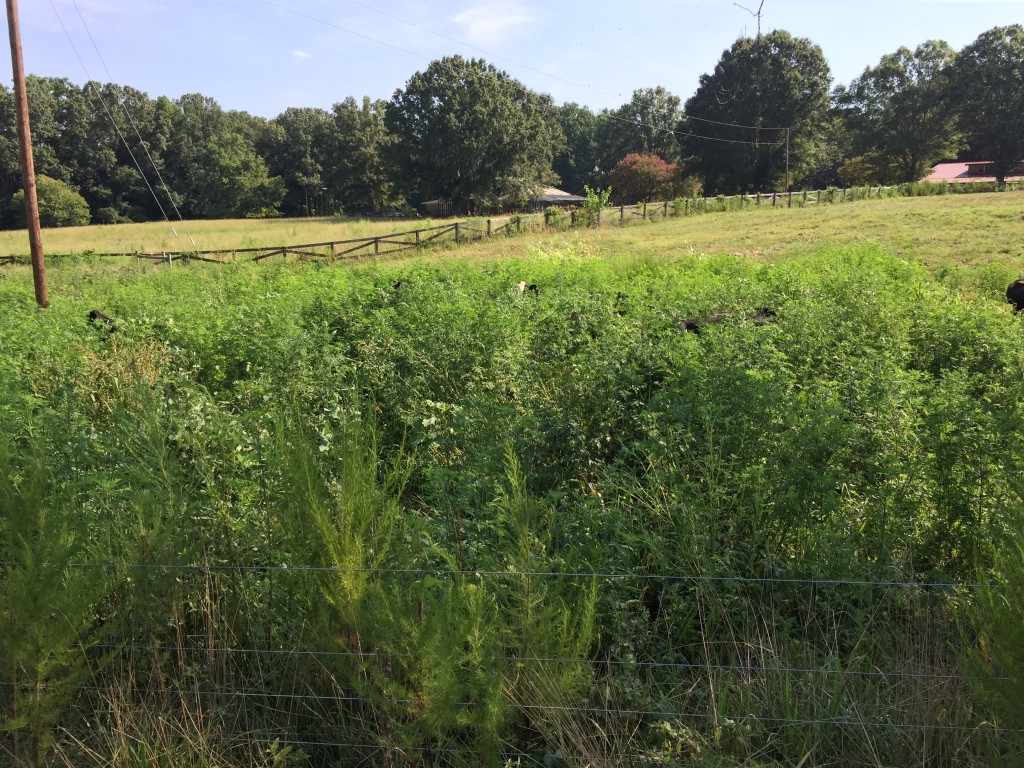
The cows are finishing up their latest rotation on the farm and will be moving to the neighbors next week to start grazing his grass. When they get back, it will be well into fall and the cows will be eating fescue instead of the warm season grasses they’ve just finished. What you see pictured above is the next to the last paddock they have moved into. The paddock behind the wooden fence in the background will be their last paddock for this week, then it’s onto the trailer and to, literally, greener pastures.
This particular picture shows a bunch of the weeds that are growing in this paddock but the grass in there is just as tall as what you see. Miguel and I were on the way to go select pigs to go to the processor the following week and I just snapped this picture as I went by because I thought it gave a good idea of how tall everything is at the end of the rotation. If you look closely, you can see a bit of cow here or there poking her head above the greenery. Now that’s tall grass.
After the cows move out of this paddock, we’ll take the mower in there and mow things closely. Then we’ll take the disc harrow in and lightly disc the ground. At that point we’ll be broadcasting seed for a pollinator habitat that will allow our bees, and wild bees of course, to have a great nectar flow going into fall. Hopefully the seed we have will reseed itself and we’ll keep this little section of the farm in pollinator habitat. With that and some other things we are working on, hopefully we’ll have some honey for sale in our store before too long which I know a number of you have been waiting for.
We have even more bees!

I already wrote about how we had a native swarm of bees move into one of our old empty hives this spring. I was super excited to get a native swarm and these girls are really kicking butt. They already have capped honey and are out working well before the other bees every morning. I’m glad to have all my bees but the native swarm is extra special because I’ve never successfully kept a native swarm before.
The way this whole thing happened was a result of me being lazy. When I took the old hives down, I simply sat them on the ground and made room on the stands for the new hives. I figured I’d get back to them sooner or later. I wasn’t sure if I was even going to keep them since it is a best practice not to reuse hive material from a failed hive since you never really know what killed the hive and whatever it is could still be in there.
Since being lazy and leaving old hives sitting around had paid off, I’d gotten even lazier and left the remaining hives on the ground. Last week I was checking on the bees, which are mesmerizing to watch, and I noted some bees robbing one of the old hives still on the ground. But then I noted what you see above, some bees hanging out on the porch. Odd. I watched for a while and they sure did look like they were staying which robbers don’t do. I stayed a while and noted a good number of bees going in and none had any pollen with them, indicating that were not taking anything into the hive. Must just be robber bees.
The next day I again checked on the bees and wow! There were bees taking pollen in which was better than seeing a moving truck back up to the hive and them start unloading boxes! This weekend I finally popped the hive up on a hive stand and cracked it open to see what is what. Well developed larvae were already in he comb and there was uncapped honey already in several combs. It really looks like lighting has struck twice and we have two native swarms who have moved into old hives!
I put out some food for them yesterday and I’ll pull the feeder off tomorrow. These guys don’t seem as vibrant as the first swarm hive, but they did just move in. I’ll keep an eye on them.
If anyone is looking for that last dead hive I was supposed to clean up, it’s sitting on the ground hoping the third time is the charm!
